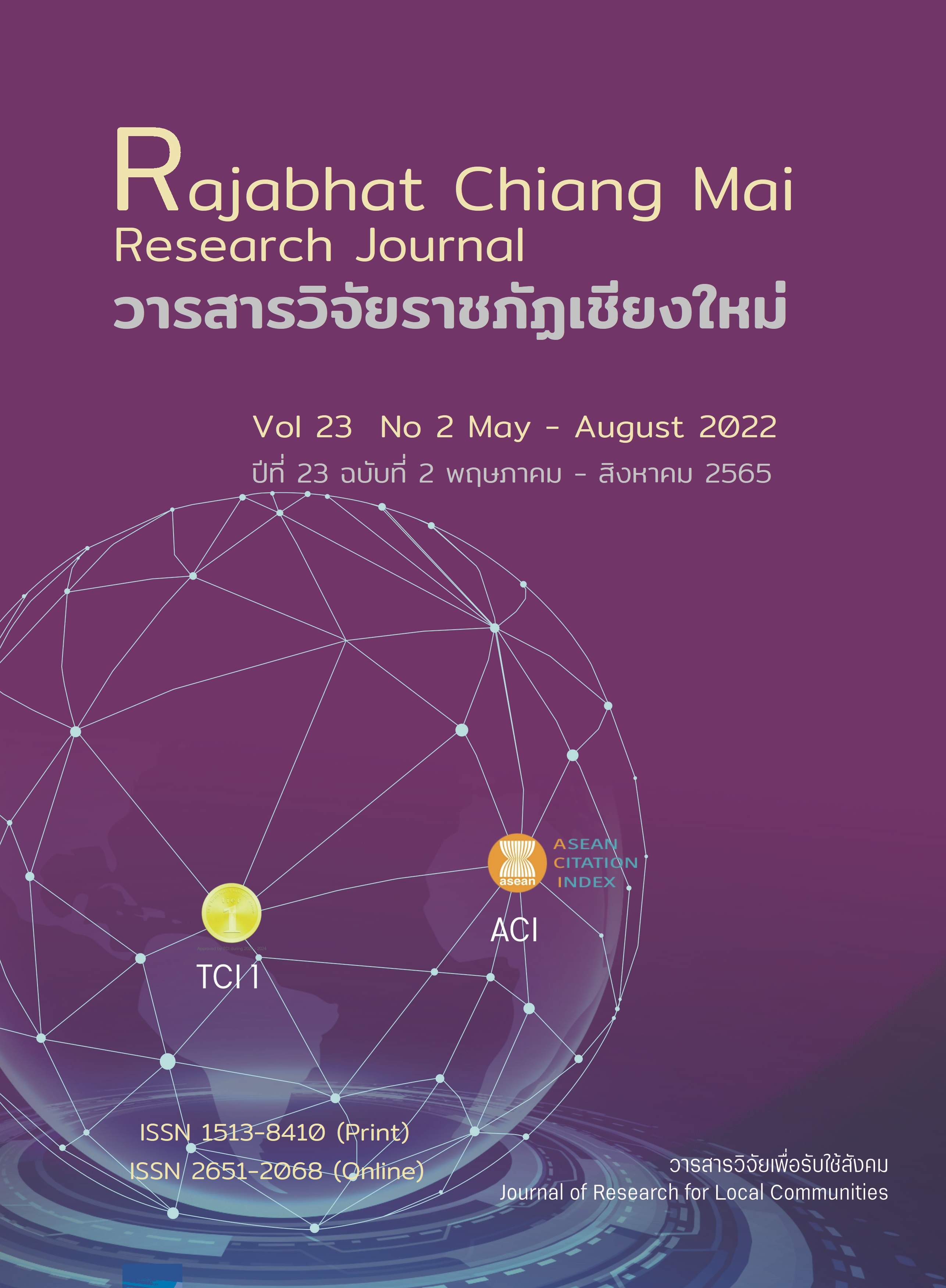The Development of Credit Scoring Indicators for Specialized Financial Institution in Thailand
DOI:
https://doi.org/10.14456/rcmrj.2022.259503Keywords:
Credit scoring, Specialized financial institution, Credit rating/Creditworthiness, Credit riskAbstract
The purposes of this research were to develop credit scoring indicators for Specialized Financial Institution (SFIs) in Thailand and to apply credit scoring to credit rating and credit risk analysis for Thailand’s SFIs. This research study and analyze data related to credit scoring from leading Credit Rating Agencies (CRA) such as The Public Debt Management Office (PDMO), TRIS Rating, S&P, Moody's and Fitch Ratings .To use qualitative and quantitative data from SFIs in Thailand and related entities organization. There are four main elements that the model structure (Business risk, Financial risks and Macro risks each of consists use qualitative and quantitative data. Indicators and weight values (100%) (Business risks (40%) include of 1) Industrial level (50%) and 2) Enterprise level (50%), Financial risks (40%) consist at the basic financial level (100%) and Macro risks (20%) consist of 1) Macro level (25%) 2) Government-Related Entity (GRE) level (25%) and 3) Medium-Term Debt management Strategy (MTDS) level (50%).
The evaluation criteria use time-series and panel data that cover Thailand’s economic cycle from 2009 to 2019. To analyze SFIs data by using the percentile statistical method to divide credit scores 1-5 (riskiest-best) by and convert to creditworthiness 1-8 (prime-loss) with the linear regression method by The Z-Score Model (Altman, 1968) as follows:
Model Equations: Z = X1Wα + X2Wδ + X3Wγ + €
The results of the research showed the development of indicators and weight values by dividing risk into business risks, financial risk and macro risk enhance credit rating of SFIs to be more accurate and suitable for the business characteristics of SFIs. The effect of credit rating is also correlated with the possibility of default of SFIs and affects to the overall of the level and management of the Thailand's public debt.
Downloads
References
Altman, E. (1968). Financial Ratios, Discriminant Analysis and the Prediction of Corporate Bankruptcy. Journal of Finance, 23(4), 589-609. DOI:10.1111/j.1540-6261.1968.tb00843.x
Andrew, K.., Til, S., & Scott, M.W. (2002). Risk Measurement, Risk Management and Capital Adequacy of Financial Conglomerates. Brookings-Wharton Papers on Financial Services, December 20022003(1). DOI:10.1353/pfs.2003.0005.
Budi, S., Riandi, A.D., Musli, M., & Rasidi, I. (2020). Article Key Performance Indicators of Indonesia State-Owned Enterprise - a Model Using BSC and MBPE. International Journal of Integrated Engineering, 12(3), 115-121. DOI: https://doi.org/10.30880/ijie.2020.12.03.015
Chengcheng, H., Moudud, A., & Kenneth, C. (2010). Review of the literature on credit risk modeling: Development of the past 10 years. Banks and Bank Systems, 5(3), 43-60.
Fritz, F.B. (2016). Contingent Liabilities Risk Management: A Credit Risk Analysis Framework for Sovereign Guarantees and On-Lending (Country Experiences from Colombia, Indonesia, Sweden and Turkey). World Bank Policy Research Working Paper, No.7538.
Hand, D.J., & Jacka, S.D. (1998). Credit Scoring, Statistical Techniques and Evaluation Criteria: A Review of the Literature. Intelligent Systems in Accounting Finance & Management. London.
Santi, C., & Prasopchok, N. (2017). Assessment of fiscal transparency of non-financial enterprises for fiscal sustainability. Faculty of Economic Development, the National Institute of Development Administration. (In Thai)
Somboon, S. (2015). Credit Scoring System for Managing Risk in Agricultural Loan Portfolio of the Thailand Rural Financial Market. Applied Economics Journal, 22(1), 27-50. (In Thai)
The State Enterprise Policy Office (2017). List of state-owned enterprises in the supervision of ministries. Retrieved from http://www.sepo.go.th/content/162 (In Thai)
The Public Debt Management Office (2005). Public Debt Management Act B.E.2005 and amended. Retrieved from https://www.pdmo.go.th (In Thai)
Downloads
Published
How to Cite
Issue
Section
License
Copyright (c) 2022 Rajabhat Chiang Mai Research Journal

This work is licensed under a Creative Commons Attribution-NonCommercial-NoDerivatives 4.0 International License.
1. Articles, information, content, images, etc published in the “Community and Social Development Journal” are copyrighted by the Community and Social Development Journal, Chiang Mai Rajabhat University. In order to properly distribute the articles through print and electronic media, the authors still hold the copyright for the published articles under the Creative Commons Attribution (CC BY) license, which allows the re-distribution of the articles in other sources. References must be made to the articles in the journal. The authors are responsible for requesting permission to reproduce copyrighted content from other sources.
2. The content of the articles appearing in the journal is the direct responsibility of the article authors. The editorial board of the journal does not necessarily agree with or share any responsibility.














